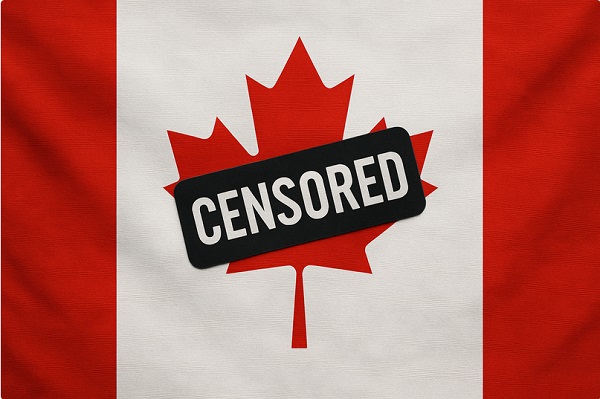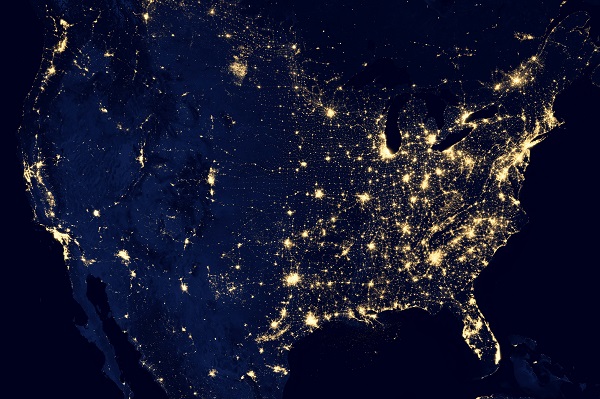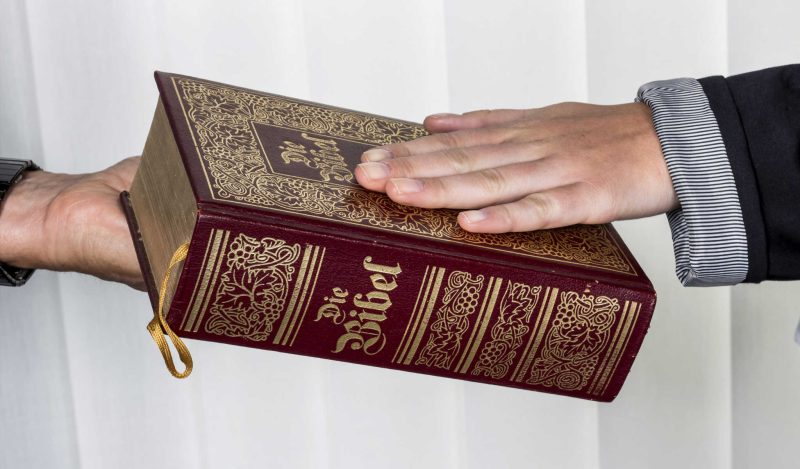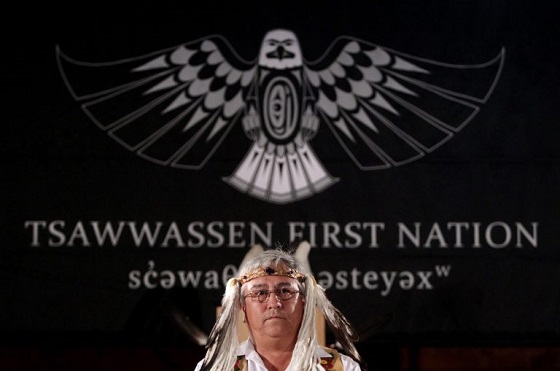Opinion
The 5 Stages to an Alberta Party Election Loss

The Alberta Party managed to attain 5x more votes than they did in 2015. Yet were the biggest losers of the 2019 election cycle. To be honest I believe we would have been well served to have the AB Party win a couple seats in the legislature. However, that is certainly not how things went down on April 16th. They gained 5x the votes and lost all three of their seats.
I have seen some curious behaviour from former Alberta Party candidates as of late and it got me to thinking: ‘What is the AB Party (both party and individual candidates) going through right now?’ Lets explore what I believe to be happening and where I think they need to go to turn (what is now a fringe party) into the opposition.
5 Stages of the Alberta Party Loss
Denial
As mentioned The AB Party went into the election holding 3 seats, hoping to build upon their party growth. What they attained was actually pretty incredible. They recieved over 5x the amount of votes they had in 2015. From 33,867 to 170,872. The response to attaining 0 seats was not surprising and was somewhat humble In my opinion. Mandel cited being proud of the AB Party brand and, frankly, they should be. However, he was wrong for blaming polarization as the reason for the loss. You cannot simultaneously gain 5x the votes and blame polarization. The one thing missing here is that there has been no recognition that their platform was extremely weak. They continue to be in denial that their ideas were not inspiring, their vision was lacking, and their boldness was not focussed on any areas of importance. The AB Party is currently in denial. I do, however, think they are moving past this. Slowly but surely.
Anger
Although we have not seen a direct example of anger from the Party we have started seeing some pretty broad examples of anger throughout the AB Party team/former candidates. I have seen individual candidates who have generally touted themselves as the calm and collected type start to lash out. I have seen insults directed towards conservatives and towards anyone who disagrees with them in general. It is clear that after a couple weeks individuals are starting to feel angry. This is to be expected it is, after all, a human trait. It is now a month after the election. Candidates who worked so hard for so long are realizing what the election cost them both financially, and emotionally. They find it freeing not to be under the “do no harm” mantra of the party system anymore and are beginning to say how they really feel. This is where the rubber really hits the road. The AB party was supposed to be different, made up of candidates who respond with thoughtfulness and consideration. The blinders are being pulled off and we are finding out that the AB party is just another party. They are no different than anyone else. They have their spin, they have their ideology, and ultimately they were fooling themselves into thinking they were different. Perhaps this is an opportunity for their candidates to prove me wrong and pull back on some of the over the top anger and remember that anger is in general, just not worth it.
Bargaining
We have seen a very very clear example of bargaining this week. The AB Party refuses to accept the fact that they are no longer in the Legislature. They have asked for money from they LAO with the intent of being a quasi opposition without a seat in the legislature. They want the funding to do the research while they no longer represent anyone. This is just part of the steps of grief that the AB Party is facing. They are trying to hold on to what once was but no longer is.
Depression
I don’t think the AB party is here yet. Depression in the party sense is devastating. We are going to see growing disinterest from individuals who gave so much before the election. We are going to see folks question ‘What is the point?’. They are going to question the AB party principles, they are going to ask themselves if they should just try to change the NDP or UCP from within. There will be some individuals who pull back and you won’t hear from them again. This is the stage that the Party’s head brass need to address head on. They need to quickly work on inspiring individuals and they need to come up with a plan to allow individuals the time to “shut-off” after a tough election while ensuring they don’t lose touch. If the depression symptom spirals out of control their party will die. On an individual sense, and with sincerity, I do ask anyone who finds themselves getting into this stage to take the time to reflect on the greater good in life. Please seek help if you need to. Depression is nothing to joke about and, yes, an election loss is a legitimate reason for someone to become depressed.
Acceptance.
I do hope the AB party is able to move to acceptance quickly. Let’s look at a few things that the AB party needs to accept.
1. They ran a terrible platform – Yes, there were things in their platform that were amenable. However, it was choppy there was no consistency. It focussed on things that Albertans didn’t care enough about. They were bold in all the wrong areas.
2. The AB party made a mistake kicking out Greg Clarke as leader – There was no opposition MLA that I liked more than Greg. Make no mistake, (while Greg may not admit it himself) Greg’s demotion was a result of a coup from old PC members who didn’t like Jason Kenney. They were quick to join the AB party and place their own person in the position of leadership. Stephen Mandel may have carried the party to 5x more votes but there is no doubt it was on the kindness and likability of former MLA Greg Clarke.
3. They cannot blame polarization for their loss – If they knew that the election was going to be a polarizing one they were perfectly positioned to create themselves as the opposing pole. Instead they positioned themselves as an outlier. The election was polarizing, yes. However, as I already said, they cannot simultaneously blame polarization while championing 5x more votes.
4. They are not different than other parties. – Trying to run a party as though Ideology doesn’t exist is a fools errand. The thought that they are going to do politics differently and its all going to turn out does not come from humility but rather just a vain attempt to pull the wool over the eyes of the public. Trudeau is a perfect example of the AB party narrative. He was going to do politics differently too. The AB party just isn’t different from other parties and the idea that they think they are is actually quite frightening.
5. They need to stop talking, and start working – The AB party is doing themselves no favours by silly maneuvers such as asking for money from the LAO. They need to stop this nonsense and come to grips with the fact that they are now no different than the FCP, the AAP, and the AIP. They should look at the votes they attained as an opportunity to fundraise, not as a passage to being taxpayer funded.
In Conclusion: There is a lot of room for the Alberta party to grow and become the official opposition in 2023. However, this will never happen if they get stuck where they are. They need to move beyond the Denial, Anger, Bargaining, and Depression stages and start to accept their failures so they can embrace the reasons for their incredible success at achieving 5x more votes than they did in 2015.
Censorship Industrial Complex
Ottawa’s New Hate Law Goes Too Far

From the Frontier Centre for Public Policy
By Lee Harding
Ottawa says Bill C-9 fights hate. Critics say it turns ordinary disagreement into a potential crime.
Discriminatory hate is not a good thing. Neither, however, is the latest bill by the federal Liberal government meant to fight it. Civil liberties organizations and conservative commentators warn that Bill C-9 could do more to chill legitimate speech than curb actual hate.
Bill C-9 creates a new offence allowing up to life imprisonment for acts motivated by hatred against identifiable groups. It also creates new crimes for intimidation or obstruction near places of worship or community buildings used by identifiable groups. The bill adds a new hate propaganda offence for displaying terrorism or hate symbols.
The Canadian Civil Liberties Association (CCLA) warns the legislation “risks criminalizing some forms of protected speech and peaceful protest—two cornerstones of a free and democratic society—around tens of thousands of community gathering spaces in Canada.” The CCLA sees no need to add to existing hate laws.
Bill C-9 also removes the requirement that the Attorney General consent to lay charges for existing hate propaganda offences. The Canadian Constitution Foundation (CCF) calls this a major flaw, noting it removes “an important safeguard for freedom of expression that has been part of Canada’s law for decades.” Without that safeguard, decisions to prosecute may depend more on local political pressures and less on consistent national standards.
Strange as it sounds, hatred just will not be what it used to be if this legislation passes. The core problem begins with how the bill redefines the term itself.
Previously, the Supreme Court of Canada said hatred requires “extreme manifestations” of detestation or vilification that involve destruction, abhorrence or portraying groups as subhuman or innately evil. Instead, Bill C-9 defines hatred as “detestation or vilification,” stronger than “disdain or dislike.” That is a notably lower threshold. This shift means that ordinary political disagreement or sharp criticism could now be treated as criminal hatred, putting a wide range of protected expression at real risk.
The bill also punishes a hateful motivation more than the underlying crime. For example, if a criminal conviction prompted a sentence of two years to less than five years, a hateful motivation would add as much as an additional five years of jail time.
On paper, most Canadians may assume they will never be affected by these offences. In practice, the definition of “hate” is already stretched far beyond genuine threats or violence.
Two years ago, the 1 Million March for Children took place across Canada to protest the teaching of transgender concepts to schoolchildren, especially the very young. Although such opposition is a valid position, unions, LGBT advocates and even Newfoundland and Labrador Conservatives adopted the “No Space For Hate” slogan in response to the march. That label now gets applied far beyond real extremism.
Public pressure also shapes how police respond to protests. If citizens with traditional values protest a drag queen story hour near a public library, attendees may demand that police lay charges and accuse officers of implicit hatred if they refuse. The practical result is clear: officers may feel institutional pressure to lay charges to avoid being accused of bias, regardless of whether any genuine threat or harm occurred.
Police, some of whom take part in Pride week or work in stations decorated with rainbow colours in June, may be wary of appearing insensitive or intolerant. There have also been cases where residents involved in home invasion incidents were charged, and courts later determined whether excessive force was used. In a similar way, officers may lay charges first and allow the courts to sort out whether a protest crossed a line. Identity-related considerations are included in many workplace “sensitivity training” programs, and these broader cultural trends may influence how such situations are viewed. In practice, this could mean that protests viewed as ideologically unfashionable face a higher risk of criminal sanction than those aligned with current political priorities.
If a demonstrator is charged and convicted for hate, the Liberal government could present the prosecution as a matter for the justice system rather than political discretion. It may say, “It was never our choice to charge or convict these people. The system is doing its job. We must fight hate everywhere.”
Provincial governments that support prosecution will be shielded by the inability to show discretion, while those that would prefer to let matters drop will be unable to intervene. Either way, the bill could increase tensions between Ottawa and the provinces. This could effectively centralize political authority over hate-related prosecutions in Ottawa, regardless of regional differences in values or enforcement priorities.
The bill also raises concerns about how symbols are interpreted. While most Canadians would associate the term “hate symbol” with a swastika, some have linked Canada’s former flag to extremism. The Canadian Anti-Hate Network did so in 2022 in an educational resource entitled “Confronting and preventing hate in Canadian schools.”
The flag, last used nationally in 1965, was listed under “hate-promoting symbols” for its alleged use by the “alt-right/Canada First movement” to recall when Canada was predominantly white. “Its usage in modern times is an indicator of hate-promoting beliefs,” the resource insisted. If a historic Canadian symbol can be reclassified this easily, it shows how subjective and unstable the definition of a “hate symbol” could become under this bill.
These trends suggest the legislation jeopardizes not only symbols associated with Canada’s past, but also the values that supported open debate and free expression. Taken together, these changes do not merely target hateful behaviour. They create a legal framework that can be stretched to police dissent and suppress unpopular viewpoints. Rest in peace, free speech.
Lee Harding is a research fellow for the Frontier Centre for Public Policy.
Daily Caller
US Supreme Court Has Chance To End Climate Lawfare


From the Daily Caller News Foundation
All eyes will be on the Supreme Court later this week when the justices conference on Friday to decide whether to grant a petition for writ of certiorari on a high-stakes climate lawsuit out of Colorado. The case is a part of the long-running lawfare campaign seeking to extract billions of dollars in jury awards from oil companies on claims of nebulous damages caused by carbon emissions.
In Suncor Energy (U.S.A.) Inc., et al. v. County Commissioners of Boulder County, major American energy companies are asking the Supreme Court to decide whether federal law precludes state law nuisance claims targeting interstate and global emissions. This comes as the City and County of Boulder, Colo. sued a long list of energy companies under Colorado state nuisance law for alleged impacts from global climate change.
The Colorado Supreme Court allowed a lower state trial court decision to go through, improbably finding that federal law did not preempt state law claims. The central question hangs on whether the federal Clean Air Act (CAA) preempts state common law public nuisance claims related to the regulation of carbon emissions. In this case, as in at least 10 other cases that have been decided in favor of the defendant companies, the CAA clearly does preempt Colorado law. It seems inevitable that the Supreme Court, if it grants the cert petition, would make the same ruling.
Dear Readers:
As a nonprofit, we are dependent on the generosity of our readers.
Please consider making a small donation of any amount here.
Thank you!
Such a finding by the Supreme Court would reinforce a 2021 ruling by the Second Circuit Appeals Court that also upheld this longstanding principle of federal law. In City of New York v. Chevron Corp. (2021), the Second Circuit ruled that municipalities may not use state tort law to hold multinational companies liable for climate damages, since global warming is a uniquely international concern that touches upon issues of federalism and foreign policy. Consequently, the court called for the explicit application of federal common law, with the CAA granting the Environmental Protection Agency – not federal courts – the authority to regulate domestic greenhouse gas emissions. This Supreme Court, with its 6-3 conservative majority, should weigh in here and find in the same way.
Boulder-associated attorneys have become increasingly open to acknowledging the judicial lawfare inherent in their case, as they try to supplant federal regulatory jurisdiction with litigation meant to force higher energy prices rise for consumers. David Bookbinder, an environmental lawyer associated with the Boulder legal team, said the quiet part out loud in a recent Federalist Society webinar titled “Can State Courts Set Global Climate Policy. “Tort liability is an indirect carbon tax,” Bookbinder stated plainly. “You sue an oil company, an oil company is liable. The oil company then passes that liability on to the people who are buying its products … The people who buy those products are now going to be paying for the cost imposed by those products.”
Oh.
While Bookbinder recently distanced himself from the case, no notice of withdrawal had appeared in the court’s records as of this writing. Bookbinder also writes that “Gas prices and climate change policy have become political footballs because neither party in Congress has had the courage to stand up to the oil and gas lobby. Both sides fear the spin machine, so consumers get stuck paying the bill.”
Let’s be honest: The “spin machine” works in all directions. Make no mistake about it, consumers are already getting stuck paying the bill related to this long running lawfare campaign even though the defendants have repeatedly been found not to be liable in case after case. The many millions of dollars in needless legal costs sustained by the dozens of defendants named in these cases ultimately get passed to consumers via higher energy costs. This isn’t some evil conspiracy by the oil companies: It is Business Management 101.
Because the climate alarm lobby hasn’t been able to force its long-sought national carbon tax through the legislative process, sympathetic activists and plaintiff firms now pursue this backdoor effort in the nation’s courts. But their problem is that the law on this is crystal clear, and it is long past time for the Supreme Court to step in and put a stop to this serial abuse of the system.
David Blackmon is an energy writer and consultant based in Texas. He spent 40 years in the oil and gas business, where he specialized in public policy and communications.
-

 Automotive1 day ago
Automotive1 day agoThe $50 Billion Question: EVs Never Delivered What Ottawa Promised
-

 Health2 days ago
Health2 days agoUS podcaster Glenn Beck extends a lifeline to a Saskatchewan woman waiting for MAiD
-

 Local Business21 hours ago
Local Business21 hours agoRed Deer Downtown Business Association to Wind Down Operations
-

 C2C Journal22 hours ago
C2C Journal22 hours agoWisdom of Our Elders: The Contempt for Memory in Canadian Indigenous Policy
-

 Censorship Industrial Complex2 days ago
Censorship Industrial Complex2 days agoLiberals gain support for ‘hate speech’ bill targeting Bible passages against homosexuality
-

 Alberta22 hours ago
Alberta22 hours agoAlberta introducing three “all-season resort areas” to provide more summer activities in Alberta’s mountain parks
-

 International20 hours ago
International20 hours agoTrump admin wants to help Canadian woman rethink euthanasia, Glenn Beck says
-

 Sports22 hours ago
Sports22 hours agoEgypt, Iran ‘completely reject’ World Cup ‘Pride Match’ plan






